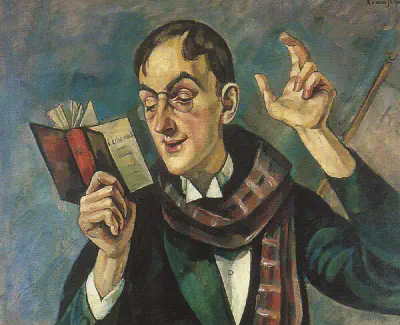Philosophy can often appear to be a daunting subject. All those great minds! All those long words! All those endless sentences that go on for half a page! The popular image of philosophy—an image that some philosophers are reluctant to dispel—is that it is an unusually difficult pursuit. And so perhaps it is not surprising that many readers sit down to read philosophy full of good intentions, only to find themselves grinding to a halt in a strange cocktail of frustration, inadequacy, and despair.
How (not) to read philosophy
If you look at most online guides to reading philosophy, they tell you that to read philosophy, you need to be particularly methodical. First, you find a quiet place to settle down, free from distraction. Next, you muster all your high-minded seriousness. Then you start at the first page and work through sentence by sentence, making sure you understand each one before you move on to the next. You identify the philosopher’s arguments. You try to work out what their theses are. You think about what the premises are and what the conclusions are. You single out key terms and look them up. You make careful notes. And thus you proceed through the great work—as methodical as a giant tortoise munching its way through the contents of the salad bar—as the sun of understanding slowly dawns.
And all this is okay. In fact, it is probably good advice. But only if you have the patience of a tortoise, or if you are that kind of reader. But not all readers are the same. And failing to appreciate this is one reason that many readers of philosophy fall at the first hurdle. You don’t have to read philosophy in this tortoise-like fashion. Sometimes, there are better ways of reading. After all, different ways of reading a book can reveal different aspects of that book’s personality or character. And you really are under no obligation to read in any one particular fashion.
So in this friendly guide (which is going to stretch over eight different posts, including this one), I’m going to suggest some different ways of reading philosophy, and how to read philosophy differently, and perhaps also sometimes more fruitfully.
An afternoon with Immanuel Kant
But first, let’s look at what goes wrong. Imagine that one day, you decide you are going to get to grips with philosophy. So, you go to the bookshop and pick up a serious-looking philosophy book—let’s say it is the Critique of Pure Reason by Immanuel Kant. It feels reassuringly heavy in your hand, just the way greatness should feel.
You take the book home, and there you tell your family members—relatives, housemates, cats, dogs, cockatiels, whatever—that this afternoon you are going to be reading philosophy, so they will need to look after themselves. Then you shut yourself away with the Critique of Pure Reason, switch your phone to silent, and murmur under your breath, “Okay, Kant… Let’s be having you…”
Not knowing where else to start, you begin with page one. First, you read the editor’s introduction, which seems to go on forever and doesn’t make a lot of sense, mainly because it seems to assume that you’ve already read the book, which you haven’t. After the introduction, there is a quote in Latin from somebody called Baco de Verulam. Unfortunately, you don’t know Latin. Nor do you know who this Baco character is (later you look up the name online, and find he is Francis Bacon, who you’ve heard of, but can’t remember anything about). You skip the Latin and continue. Next up, there are a couple of dedications to his Excellency Baron von Zedlitz, whoever he is. They are sweet and slightly fawning.
By now, if you are being honest with yourself, you are feeling that time is beginning to drag. You have ploughed through almost one hundred pages, and you haven’t really even started on the meat of the book. So now you turn the page to Kant’s first preface (there are two, you note, both longer than you would like), and the first sentence is four lines long. It goes like this:
Human reason has the peculiar fate in one species of its cognitions that it is burdened with questions which it cannot dismiss, since they are given to it as problems by the nature of reason itself, but which it also cannot answer, since they transcend every capacity of human reason. [1]
You read through the over-long sentence several times. You think you might know what Kant is talking about, but you are not sure. You shrug and press on. Maybe it will become clear. But Kant is now talking about metaphysics and dogmatism and despotism and scepticism and anarchy and nomads, and it’s anybody’s guess what is going on. You look at your watch. Time is moving slowly, and you have a headache. You suspect you are succumbing to melancholy (you’ve heard it is something philosophers suffer from). But you are also stubborn. You are not going to give up too easily. “Okay,” you mutter to yourself. “I’ll finish the preface, and then call it a day.”
As you plough onwards, Kant admits that his book is going to be extremely boring (“treated in dry, merely scholastic manner”). You are outraged. What kind of person writes a book, you ask yourself, and then crows about how boring it is? Then, as if to soften the blow, Kant makes what you think is probably a joke—about books that would be shorter if they were not so short, and books that would be clearer if they had not been made so clear. But if this is a joke, you don’t get it. And this only makes you more depressed.
By now, you are starting to think you actually hate Kant. And the moment you have this thought, you are ashamed… You suspect your hatred is a sign of your pettiness. It is a sign your intellect is small and cramped, your soul inferior. Then you start to sob, wetting the pages of the Critique of Pure Reason with the hot tears of your frustration.
You close the book. You look at your watch. The sun has set. It’s time to call it a day. “Okay,” you say to yourself. “I’ll return to this tomorrow.” But as you leave the room, you know you will not return. Not tomorrow, not the day after, not next week or next month. If you do return at all, it will not be until after another year or two. Only when you have forgotten the sting of failure will you risk picking up the book again. And then you will repeat the whole process. You will stumble at the same hurdles. You will sob the same hot tears of despair. You will give up hope on the very same page…
Reading differently
But it doesn’t have to be like this. And this seven-part guide to reading philosophy aims to show you why. In the forthcoming posts, I want to rid you of your fear of philosophy, and to explore different ways of reading. Because there is more than one way of reading a philosophy book. And it is good to have a range of approaches at your disposal. As a reader of philosophy, what matters at least as much as tortoise-like determination is creativity, suppleness, flexibility, and a willingness to read differently.
So over the coming days or weeks, I’m going to explore seven different approaches to reading philosophy. There’s nothing magical about the number seven. I could have gone with thirteen—like Wallace Stevens’s Thirteen Ways of Looking at a Blackbird. Or I could have selected one thousand and one ways of reading philosophy, like the One Thousand and One Nights. Because in the end, there are as many ways of reading a philosophy book as there are readers (or even more, if you take into account that any one reader can read the same book in any number of ways).
But let’s stick with seven, so that these posts (unlike the Critique of Pure Reason) don’t go on forever. The seven I have chosen are below. I’ll be dedicating one short article to each. And by the time you get to the end of this series of posts, you should be effectively inoculated against the things that too often get in the way of getting to grips with philosophy: fear, a sense of inadequacy, frustration, and despair.
Read the whole seven ways of reading philosophy series…
- Reading Napoleonically
- Reading haphazardly
- Reading self-interestedly
- Reading out loud
- Reading drunkenly
- Reading for laughs
- Reading with others (forthcoming!)
Notes:
[1] Immanuel Kant (trans. Paul Guyer and Allen W. Wood), The Critique of Pure Reason, Cambridge University Press (1998), p. 99.
Image: Yumeiji Takehisha, Woman Reading a Book on a Sofa (1919), Public Domain via Wikimedia Commons.



